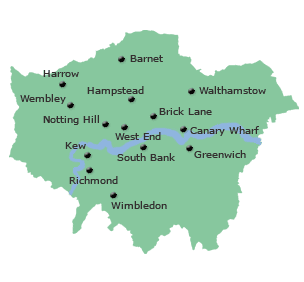
The UK experienced its warmest day of 2025 so far on Tuesday, with temperatures climbing to 24.9°C (76.8°F). The hottest spots were Ross-on-Wye in the West Midlands and Trawscoed in
west Wales, surpassing Monday’s peak of 24.5°C recorded at St James’s Park in London.
Forecasters suggest the warm spell could intensify, with the possibility of hitting 29°C on Thursday – potentially setting a record for the hottest start to May as voters head to the polls for local elections in England.
Tuesday also saw highs of 22.4°C in Aboyne, Scotland, and 22.2°C in Derrylin, Northern Ireland. Temperatures are expected to stay in the low to mid-20s on Wednesday, with London likely reaching around 27°C — a level last seen in April 2018 in Cambridge.
Thursday will bring cooler conditions to Scotland and Northern Ireland, with temperatures between 13-16°C. However, southern England will continue to heat up, possibly reaching 29°C, breaking the previous 1 May record of 27.4°C set in Lossiemouth in 1990.
The warmth is being driven by air from southern Europe, arriving on a south or south-easterly breeze. Strong sunshine, combined with stable high pressure, is helping to heat the air further. However, with rising humidity, there’s a risk of heavy and thundery showers developing across England and Wales later in the week.
As the weekend approaches, temperatures will gradually fall, although much of the UK will remain dry with plenty of sunshine and light winds. Northern Scotland and eastern areas are expected to see more cloud, particularly on Sunday.
By Monday, temperatures across the UK are forecast to drop to between 12°C and 17°C, more typical for early May.
Is this a heatwave? Despite the warm spell, it likely won’t meet the official criteria for a heatwave, which requires three consecutive days at or above specific local temperature thresholds. It’s common for spring to bring such short bursts of warmth, though scientists warn that with climate change, spring heat is becoming more frequent. Recent studies highlight spring as the fastest-warming season in the UK.
High UV Levels and Health Advice UV levels are expected to be high across most of the UK, except for northern Scotland, where they will remain moderate. While some UV exposure is vital for vitamin D production, too much can increase the risk of skin cancer and eye problems.
Experts advise staying in the shade during peak sun hours, applying SPF 30 or higher sunscreen every two hours, and taking extra precautions with children. It's important to remember that you can still burn even on cloudy days.
Additionally, high temperatures can strain the body. The UK Health Security Agency recommends staying hydrated, keeping cool indoors, and avoiding intense physical activity during the hottest parts of the day. Photo by GraceKelly, Wikimedia commons.



































